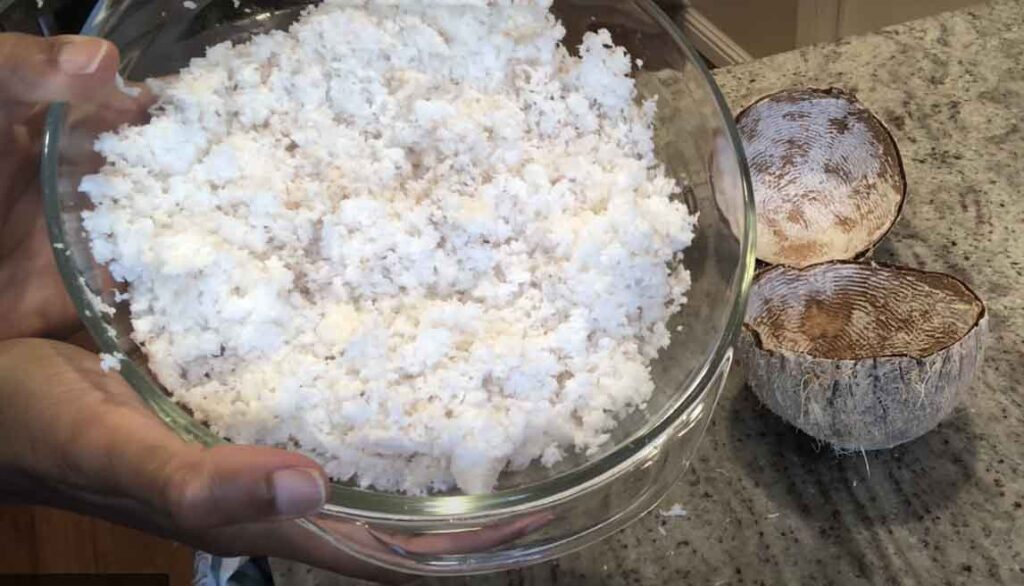
Coconuts so important in Sri Lankan cooking and it’s one item that’s somewhat hard to deal with so I think it warrants a post by itself.
Shredded Coconut
For things like a pol sambol it doesn’t taste the same to use frozen shredded coconut or re-hydrated desiccated coconut. The trouble of locating a fresh coconut and dealing with scraping it – is really worth the hassle. In the US these are available in Indian Grocery stores and if you’re in California some Mexican markets carry them too. In the Bay Area I’ve also seen them at Molly Stone’s and Berkeley Bowl.
Here’s my video on choosing a “good” coconut, how to crack it, and scrape it with an Odiris scraper. I brought my Odiris scraper in my luggage years ago. These days if you live in the US you can buy it on Amazon or get it shipped from your nearest Sri Lankan store – like this one: https://www.lankandelight.com/kitchen-utensils/ (and no I don’t make money from affiliated links).
Don’t have a scraper? No problem. If you have a small food processor or spice grinder – you can shred it there. You just have to freeze the coconut first as shown in my next video below:
Storage
Freshly grated coconut doesn’t last long and neither do store bought coconuts. In Sri Lanka the coconuts we buy are fresh from an actual tree and last months without any problem. Coconuts we buy in the US have likely been sitting in a ship and warehouse for a couple months already and are typically a few weeks shy of going bad. If you buy them from the store – grate/scrape them as soon as you have time to spare and freeze the grated coconut in zip lock bags.
Substitute
If you really don’t have time for dealing with fresh coconut – the dry stuff can be tweaked to taste better.
I use the Let’s Do Organic brand of unsweetened shredded coconut. 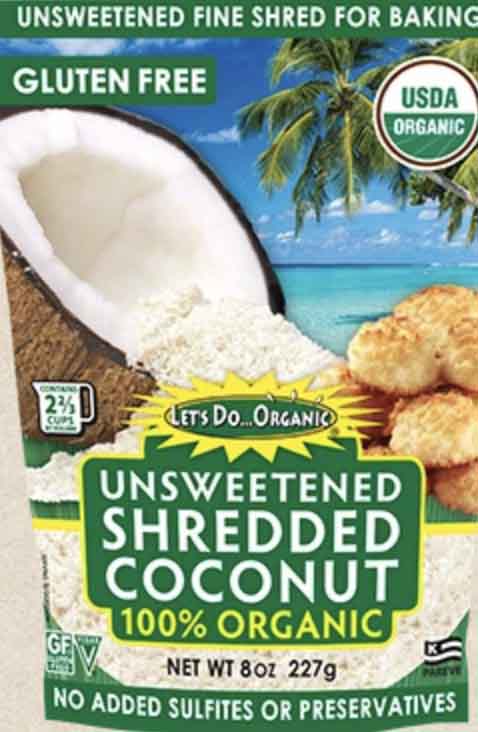
That brand tastes the best to me. Instead of re-hydrating it with just warm water I use 1/2 water and 1/2 coconut milk from a can. That really adds creaminess and brings it pretty close to fresh grated coconut.
Coconut Milk
Coconut milk is conveniently available in cans in the US thankfully. This is one convenience I’ve gotten so used to that I miss it when in Sri Lanka. Couple of issues with cans is that in cold climates the coconut-cream rises to the top and solidifies and the ‘water’ is at the bottom. This can be really inconvenient when you want a certain quantity of coconut milk and the whole thing is separated. Also when making things like watalappan it ruins the process of dissolving the jaggery in the coconut milk. Another example is hoppers – the mixture becomes lumpy with blobs of frozen coconut.
I use a couple simple methods to melt it back into a smooth liquid. See video below:
Storage – Another issue with coconut milk cans is that sometimes I have left over coconut milk that doesn’t last in the refrigerator. A handy storage method is to pour the coconut milk into ice-cube trays and freeze it. Then use the frozen cubes as needed in curries.

Finally I’ve pictured below another creamed coconut product (often it will be labelled as made in Sri Lanka) that comes in a paper box/pack and is cheaper than cans. Also the whole thing is a soft-solid in cool climates and easy to cut and store as pictured below. The downside is that it’s rarely found in grocery stores and needs to be purchased in bulk online. I find it’s great for curries adds that coconut-taste without needing to add much. A little goes a long way. (I wouldn’t use it where the liquid consistency is important though – for example hoppers.)

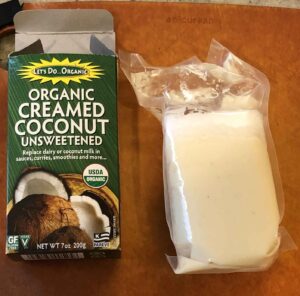
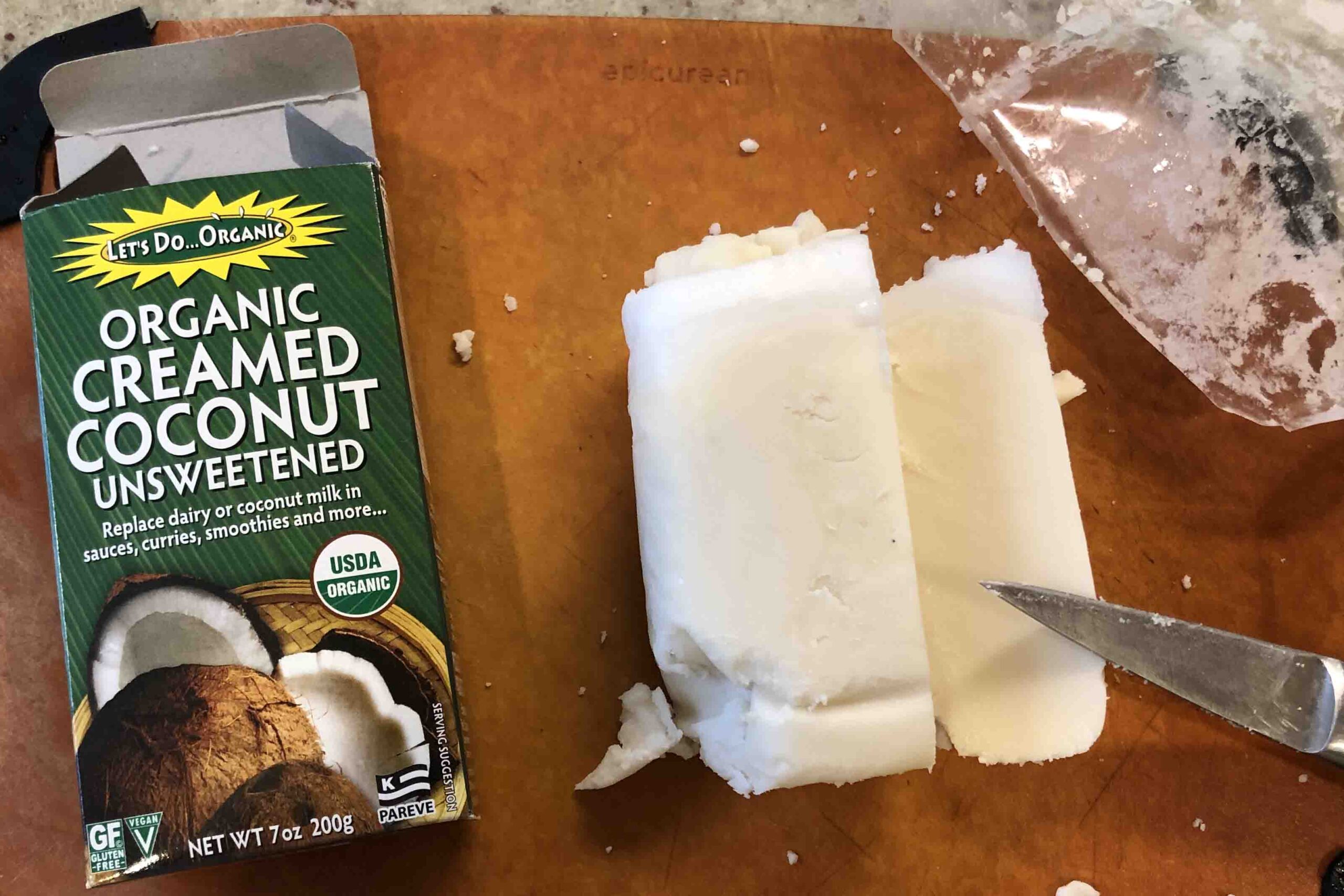
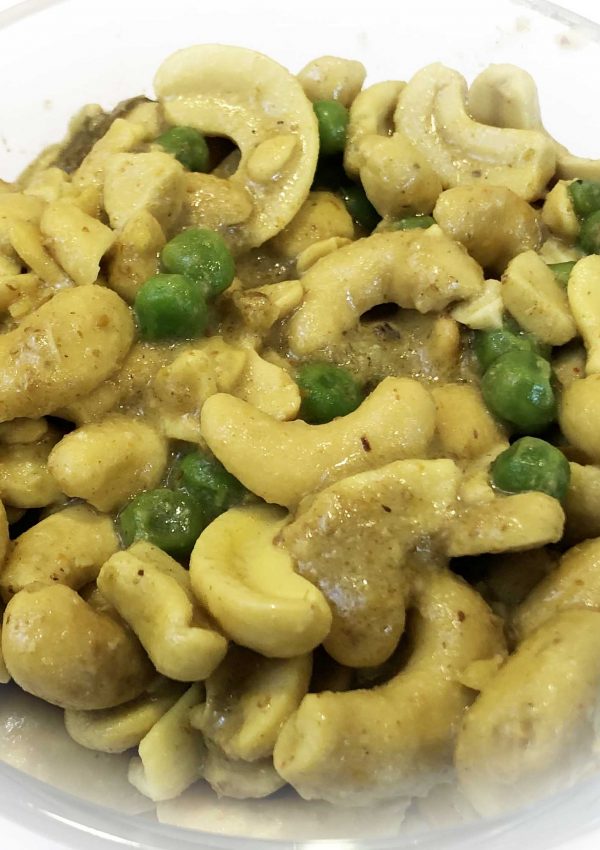
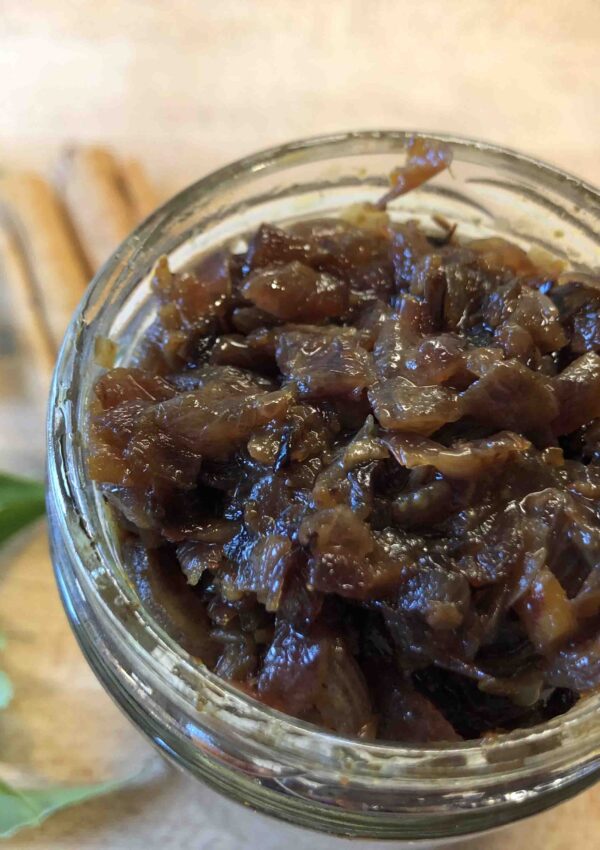


Leave a Reply